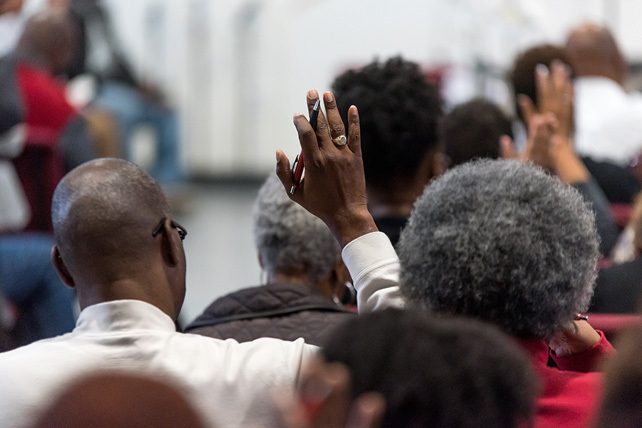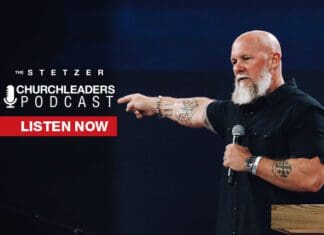In a new message about Passover, Pastor Paula White told viewers the upcoming holy season is “your divine appointment for the release of seven supernatural blessings and provision into your life.” She seemed to link blessings and “deliverance” to financial support of her ministry.
In a March 23 video posted to the Paula White Ministries YouTube page, the pastor shared a message titled “Passover Season: God’s Divine Appointment with You!” White preached about the saving blood of Jesus, which God’s followers are to commemorate for their deliverance.
Voiceover ads appeared throughout the video, urging viewers to send money so they “don’t miss your moment to release seven supernatural blessings and provision into your life.” For a “special Passover offering of $1,000 or more, as the Holy Spirit leads,” donors can receive a Waterford crystal cross, a communion set made of olive wood from the Holy Land (“designed to help you experience the joy of communion every day”), a Passover devotional series by White, and a disc recording about communion.
RELATED: Critics Call Out Christian Leaders for Attending Oval Office Prayer Session With Paula White
“You’re not doing this to get something,” White told viewers. “But you’re doing it in honor to God, realizing what you can receive.” She then quoted Exodus 23:15, saying, “None shall appear before me empty-handed.”
Critics of Pastor Paula White: ‘She’s a False Teacher’
White, the personal pastor of President Trump, heads the White House Faith Office. She has sparked controversy for being a female pastor, twice-divorced, and a proponent of the prosperity gospel.
Arizona Pastor Gabriel Hughes, a frequent critic of White, reposted a Right Wing Watch warning about the financial solicitation. “Dear @realDonaldTrump, please remove Paula White,” Hughes wrote. “She’s a false teacher. Appoint a godly man who preaches Christ and Him crucified for our sins (Voddie Baucham?). Brethren, have nothing to do with this woman. In seeking a seat at the table, she doesn’t help you—you help her.”
Pastor Voddie Baucham, who recently returned to America after nearly a decade of missionary work in Zambia, has said he’s not joining the new Trump administration. Instead, he moved to Florida to help start Founders Seminary.
Minnesota Pastor Jason Gudim also reposted the Right Wing Watch warning. “If you give Paula White a grand,” he wrote, “the only thing you’ll ever be is poorer in every conceivable way imaginable.”
Jon Root, a conservative influencer and Trump supporter, said, “Anybody that you know holds true to strong biblical conviction and discernment wouldn’t be involved with Paula White.”
‘Ministry Takes Money,’ Says Pastor Paula White
In her March 23 message, White called Passover “one of the most life-changing, miracle-working seasons of the entire year.” It’s a time, she added, when God distinguishes between sheep and goats. “Passover is all about the blood, and you will see signs, wonders, and miracles, and great, great works of God,” she said.





























